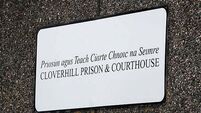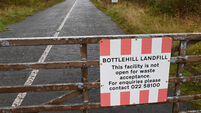Brimstone butterfly rare sight

Unfortunately this large and beautiful species is rather rare in Ireland.
Although there is a small breeding population quite close to where I live I sometimes go a whole year without seeing a single one. And this is despite the fact that they are on the wing for a long season, appearing in early spring, when they mate and have their only brood of the year, and staying around until they go into hibernation in autumn. Dense ivy or holly is nearly always chosen as a hibernation site.
The reason for their scarcity is that the caterpillar’s food plant is also rather rare. Only the leaves of two small species of native tree will sustain them. One of them, common buckthorn, is restricted to boggy places, mostly in the Midlands. The other one, alder buckthorn, is not closely related to it, and is even rarer. It occurs patchily on lime-rich soils, also in the Midlands and in the Burren.
Both species are quite attractive little trees and if they were more widely planted in gardens, parks or road verges there’s no doubt that brimstone butterflies would extend their range. J.M. Harding in his great book Discovering Irish Butterflies has some interesting observations of brimstone behaviour. Apparently females face a problem because they mate early in the spring and are often ready to lay their eggs before the leaves appear on the trees. It’s quite difficult for people to tell alder buckthorn or common buckthorn from other species like blackthorn when they’re not in leaf and apparently the butterflies find it equally difficult.
He writes: “females choose the shrub very carefully and take great care to lay not only on plants in sheltered sunny conditions but also on the right species. When leafless, females flutter around them to distinguish between buckthorns and adjoining shrubs such as blackthorn. Females can be observed brushing their wings against the twigs and probably identify the leafless plants by scent. Females also test twigs by alighting on them, fluttering while doing so. If the twig proves to be a buckthorn a single egg is laid.”
It seems that in sites where both common buckthorn and alder buckthorn are present, and there are a couple of these in Ireland, the butterflies display no preference for one species over the other.
The whole process is a fascinating insight into the close relationships between plants and insects that have evolved during their long history together.
The sycamore is a common wild tree in Ireland but it is not native. It’s native range includes mountainous areas of western Europe, such as the Pyrenees and France’s Massif Central. The fact that it has naturalised so successfully in Ireland and colonised habitats quite different to those in its native range is a bit of a mystery. It seems to have been brought into Ireland perhaps as long as 500 years ago, and the probable reason is the popularity of its timber for the production of ‘treen’. Treen (literally ‘of a tree’) were small household objects made of turned or carved wood. They included plates, bowls, boards and boxes and were enormously important before the widespread availability of pewter, silver and ceramics, which were not affordable by ordinary Irish people until the 1700s. The sycamore is a member of the maple family and in Northern Ireland is sometimes called a plane.














